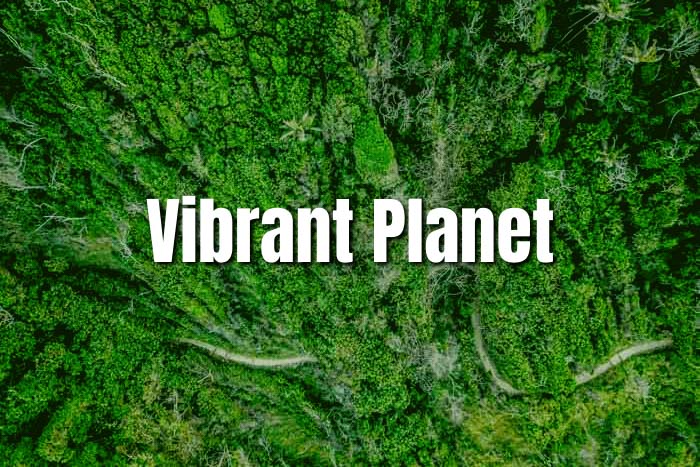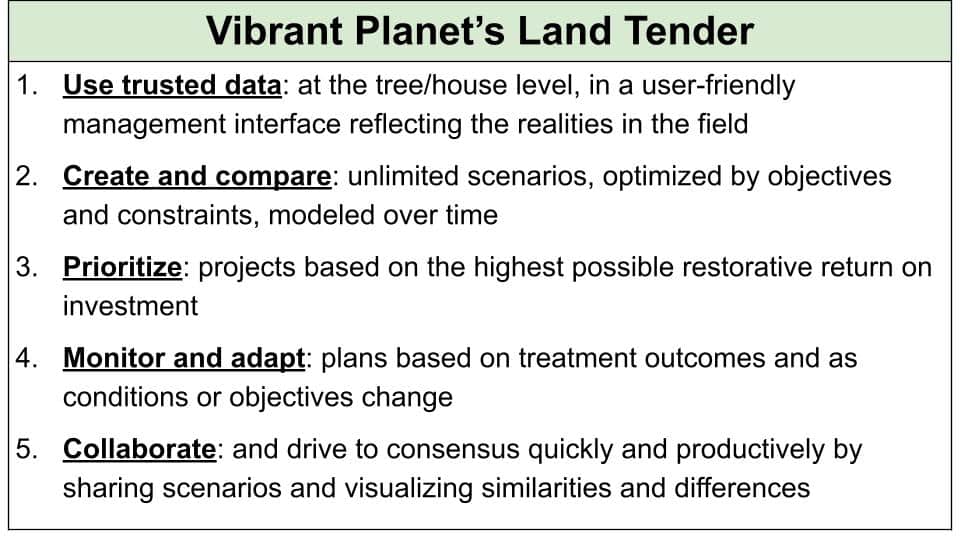Vibrant Planet raised a $17M seed round to expand its technology focusing on forest restoration across the Western U.S., Europe, and other at-risk forests worldwide.
Public sector funding to support wildfire risk reduction and forest restoration is on the rise. Yet, there’s no infrastructure to help know where and how efforts must be used to maximize impact.
This is where Vibrant Planet’s unique platform comes in to help address the concern.
The startup is developing “Land Tender” a Software as a Service (SaaS) platform for forest management.
Vibrant Planet SaaS for Forest Restoration
For the company’s CEO, Allison Wolff:
“We just need to do this — we need to restore forests faster, and they might make it through climate change, and they might help us survive climate change.”
The firm raise a $17 million funding as wildfire season is taking hold again in the West.
Lead investors include the Ecosystem Integrity Fund and The Jeremy and Hannelore Grantham Environmental Trust.
Other investors include:
- Valia Ventures,
- Earthshot Ventures (backed by John Doerr, Tom Steyer, Microsoft, etc.),
- Elemental Excelerator,
- Cisco Foundation,
- Day One Ventures,
- Data Tech Fund, and
- Halogen Ventures.
The seed funding will enable Vibrant Planet to grow its team and expand its platform to restore resilience of at-risk forests.
Prior investors include two of Silicon Valley’s top platform creators from Meta and Netflix.
The firm offers the first operating system in the field – Land Tender. It’s for forest treatment planning, decision support, monitoring and reporting, and investment prioritization. It gives organizations, public agencies, and land managers a comprehensive platform.
Vibrant Planet’s technology allows land owners, managers, and administrators to:
- Make forest treatment scenarios in real-time with the AI-backed data.
- Prioritize where and how funding should be used to cut risks. This will also maximize carbon, water, and biodiversity benefits.
- Develop treatment plans together with stakeholders.
- Keep track and report on landscape conditions and forest restoration progress.
- Use strategies and tactics based on monitoring insights.
- Create verified fire-adapted forest carbon projects that aid firms to reach net zero targets.
How the Tender Land Platform Works
Land Tender is a cloud-based planning and monitoring tool for agile, adaptive land management at any scale.
Through Tender Land, users can prioritize their objectives in relation to forest restoration.
For instance, they may prefer to pay attention to fire risk or endangered species conservation. Or they can also look at water quality as the key matter.
- Users can then run analysis to know how different landscape treatments can impact their priorities.
Vibrant Planet also offers access to a range of datasets on forest restoration. The centerpiece is a lidar map of the state of California where 6.5 million of its 33 million forested acres burned over the last two fire seasons.
Not to mention that 1.3 million acres of California’s forests experienced high severity burning that killed biomass. In these cases, it may take decades to centuries for forests to recover.
The importance of restoring resilience to key forest landscapes has never been greater. Forests store a third of the carbon dumped by humans into the air each year. They also have a vital role in regulating weather patterns and global warming.
Vibrant Planet focuses its efforts on at-risk forests like in California and the Mediterranean regions. They’re where climate change is hitting the hardest.
The firm sells Land Tender via licenses which cost $3,500 each. This lidar technology is helpful when it comes to mapping forests in 3D and learning their fire risk.
Even dense forests, which are hard to map, are possible with an AI-powered algorithm of Land Tender.
Here’s how this forest restoration platform helps users and stakeholders:
Vibrant Planet’s offering covers the competitive annual pricing for ArcGIS, the industry-standard geographic information system.
It also has less expensive offers depending on the types of ArcGIS extensions a group might spec to meet their needs.
The main difference, though, is that the firm includes a host of data that users would need to find on their own. Plus, what sounds like some clever collaboration tools.
In the words of Dr. Neil Hunt from Vibrant Planet:
“Vibrant Planet is seizing the opportunity to bring modern cloud-based technology, remote sensing, AI/ML, and intuitive user-centered design to create systems that reduce the time and cost of decision-making in forests…”
He further said that developing carbon credits will help fund the interventions necessary to restore forest health and resilience. Large companies buy carbon credits to offset their hard-to-abate carbon footprint.
The second step of the firm’s business model is to provide data and analysis to develop carbon credits. They correspond to certain amount of carbon avoided/removed from the air through the forests.
But this plan is yet to be decided and revealed.
Vibrant Planet’s platform will be available for users across California by the end of the year. It will also be ready in other Western states where demand starts to take off throughout next year.
The company further said it can add more regions or countries depending on the availability of lidar data.



